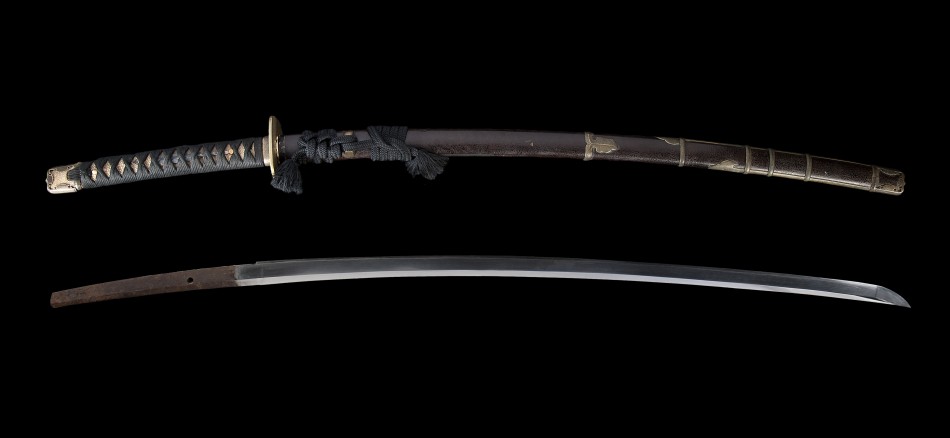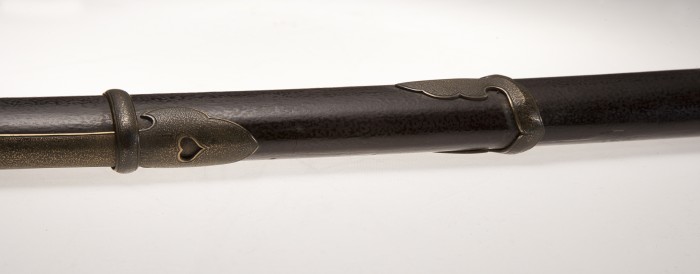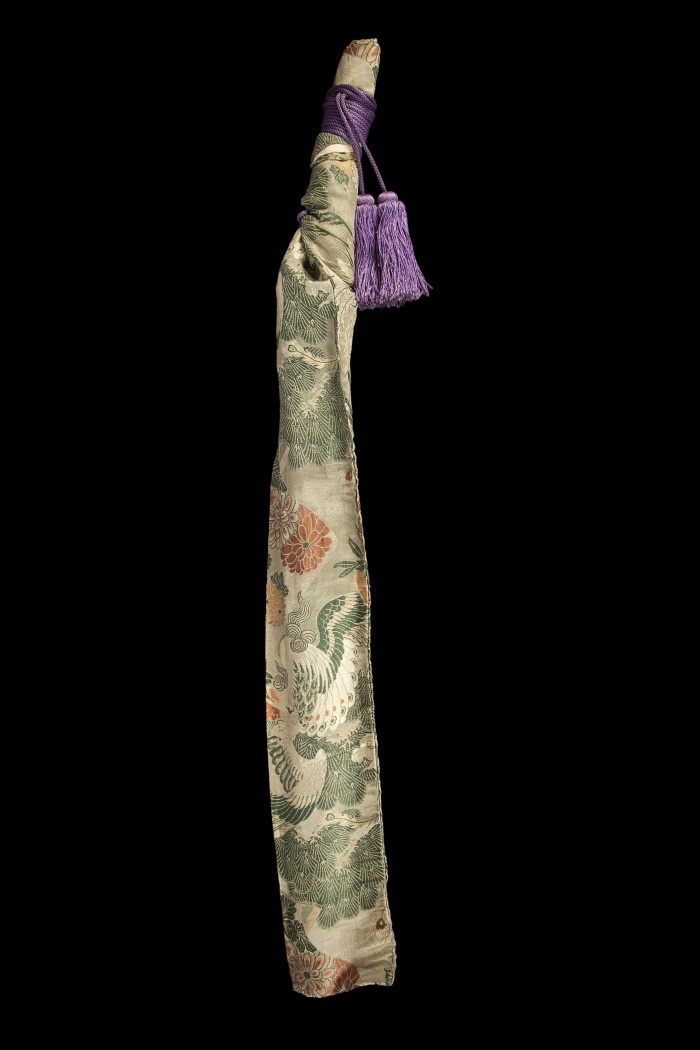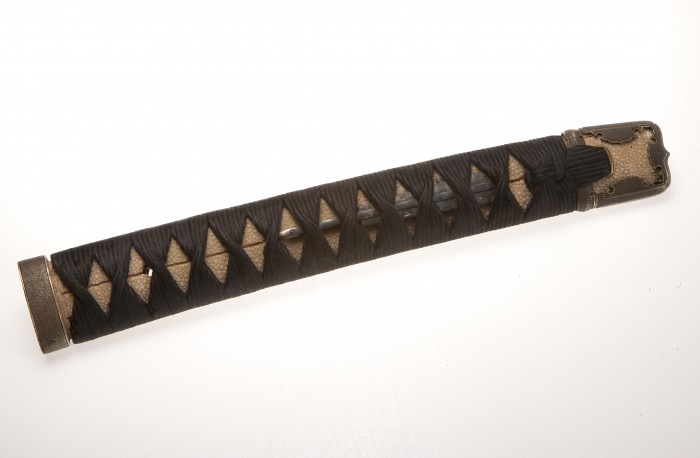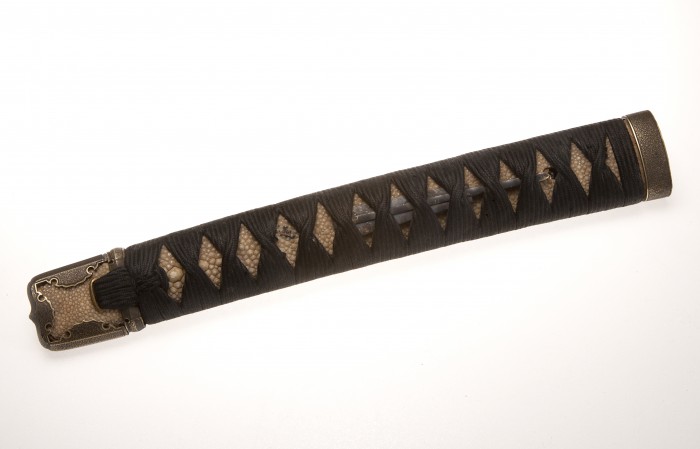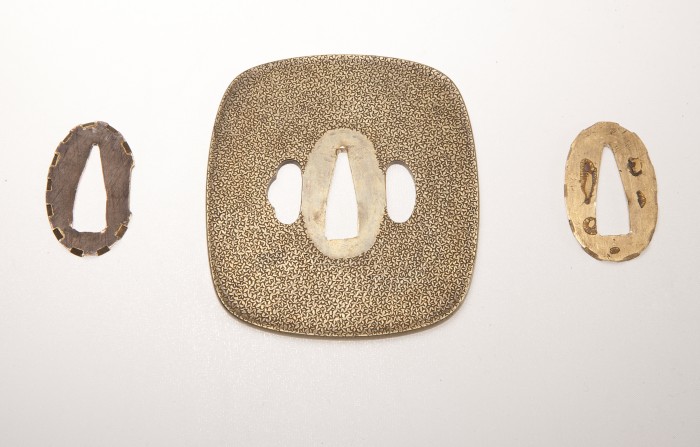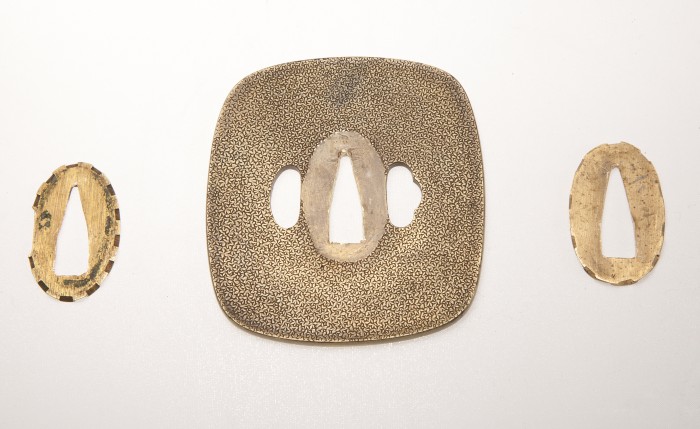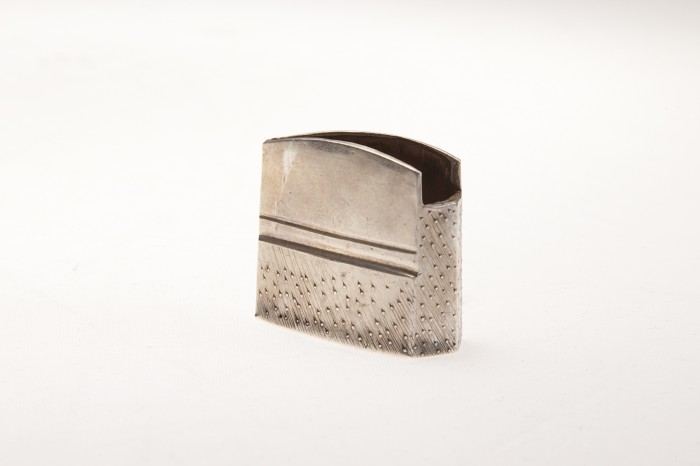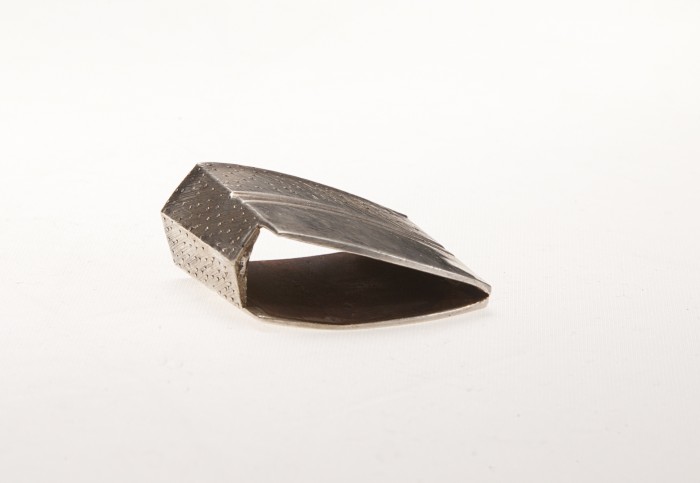Late-Edo Extra Long 76.5cm Katana with Han-dachi Koshirae
This sword is no longer available.
Type: Mumei (Unsigned) Katana
Item No.: ujka006
Swordsmith: Unknown
Period: Late Edo (~1860)
Length: 76.5cm (!)
Curvature: 2.2cm
Mekugi: 1
Body: Masame Hada
Habaki: Copper wrapped in silver
Included: Koshirae, beautiful brocade bag, sword maintenance kit, stand
Description:
Behold a very long sword indeed.
This is a super example of a Bakumatsu (Late Edo) sword, with a mesmerizing length of 76.5cm (and 110cm from tip to tip). It has a thick kasane (thick back edge of the blade), with little difference in the blade’s width at the top and bottom of the sword. This blade is in very good condition, with an eye-catching masame-hada body (straight surface grain pattern).
And what a saya (scabbard). This saya is known as Han-dachi Koshirae, or a “Half-Tachi”. “Han” means half, and dachi is for “Tachi”. This is koshirae is halfway between katana and tachi mounts. Han-dachi originally appeared during the Muromachi period when there was a transition from tachi to katana. The sword was being worn more and more edge up when on foot, but edge down on horseback as the tachi was used for. The handachi is a response to the need to be worn in either style.
In the Bakumatsu period the idea of a “return to the past” and along with talk of returning to the righteous government of old, there was a movement for Samurai to wear tachi in the same style of their ancestors. Naturally, the majority were not riding around on horseback. Late-Edo mounts were clearly set up as katana but with tachi mounts, which we see in this brilliant piece.
All parts match beautifully – this is a truly complete sword and very representative of its period. The incredibly striking tsuba (guard) is big and bold, and brings balance to the sword. The rather large menuki (under the silk tsuka handle) is of the fan that a sumo referee holds in the ring. A fitting tribute to this warrior blade.
The hearts on the sword’s scabbard are not actually, hearts. They are called “inome” – the eye shape of an Inoshishi. An inoshishi is Japan’s ‘wild boar’ (Ino for Inoshishi, “Me” is the word for eye in Japanese). The inoshishi is famous for have a very focused and driven character that doesn’t give up. Attacks with purpose. Like the tombo, the dragonfly, that flies in formation and does not retreat, the inoshishi was revered in the Japanese Samurai. Both the dragon fly and inoshishi were often symbolized on the mountings of Japanese Samurai swords.
Overall, this is a magnificent sword that will make it’s new owner incredibly happy and proud – guaranteed.
Coming to Tokyo?
If you are interested in this sword and others from our collection, please contact us to book an appointment. Private meetings are generally arranged within the Tokyo area.
Exportation from Japan:
Unique Japan is able to ship swords from Japan to countries all over the world. All legal exportation paperwork is included with every purchase. Please allow about 4 weeks for us to process and ship an order from Japan. Dealers welcome.
CLICK ON ALL IMAGES for extreme closeups. Please be patient as the images load.
*All photos taken professionally by Jensen Walker



